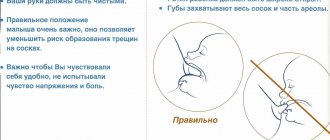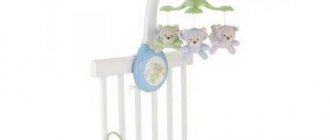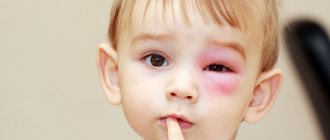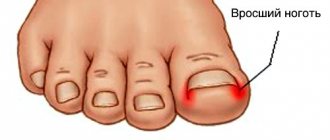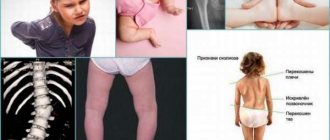The most famous pediatrician in the country, Evgeniy Komarovsky, suggested how to help a child speak and what parents can do for this.
shutterstock
Each child has his own pace of development - when the first tooth grows, when he takes the first step and says the first word. But if the growth of teeth cannot be influenced in any way, then it is quite possible to encourage the baby to speak. And it's not difficult at all. The main thing is to create conditions for this. Evgeny Olegovich Komarovsky formulated 7 simple actions that any parent can do.
Physical development of the baby
In the first weeks of life, the child actively gains weight. The average weight is 500 grams, but this indicator is individual. Some babies gain 1 or more kilograms. The pediatrician is personally responsible for weight control, and only he can tell whether the baby is at normal weight or not, but in no case should the mothers standing next to you in line dispensing advice, nor girlfriends, nor grandmothers. As for girls, their weight can range from 3.4 to 4.7 kg, boys - 3.5 to 6 kg.
As for growth, the baby can grow by 3-4 cm in the first month. Again, there are cases when the indicators of a centimeter tape are much larger. Girls usually have a height of up to 56 cm in the first month of life, boys - 59 cm.
The above are just the average weight and height of babies. Only your pediatrician should judge whether your height and weight are too small or too large (as you may think). Only it determines abnormal deviations in the development of the child.
Often mothers are interested in head and chest circumference standards. So, they should not reach an average of more than 37 cm.
If your baby’s measurement results differ significantly from other babies of the same age, then the reasons may be: the chosen type of feeding, problems during pregnancy and childbirth, problems with feeding, heredity and diseases in the child.
Baby Growth Calendar - Week 3
In the third week, the baby develops a diet and a routine according to which he will sleep. In addition, the child is stronger than in the first and second weeks. The baby is actively expanding his knowledge.
Physical development
A baby's growth and development at 3 weeks occurs at a rapid pace. Over the previous week, he gained an average of 250 grams of weight and 1 centimeter of height. His skin acquired a normal shade, dryness and physiological jaundice disappeared. The umbilical wound has already healed, or it will happen soon. Perhaps it's time for your baby to cut his nails for the first time.
The movements of the arms and legs are less chaotic. Gradually the baby learns to control his muscles. In addition, the shape of the skull, deformed during pregnancy and childbirth, is restored. The child becomes more active, he develops evening irritability associated with fatigue from impressions.
The baby can:
o hold the head for up to 15 seconds, and after a break, raise it again;
o grabs an adult’s fingers while lying on his back, sometimes trying to pull himself up;
o can lie on tummy;
o makes the first sounds.
In addition, it is at 3 weeks that the baby begins to make his first facial movements.
Increased tone of the muscles of the arms and legs is maintained. The baby develops a sense of balance.
Very soon he will learn to raise his head from a lying position. The most active ones will even be able to reflexively roll over onto their back.
Sensory development
A three-week-old baby hears noises well and reacts to them. When there is an unexpected and sharp noise, he shudders, and when there is a strong noise, he cries.
The baby can focus his gaze for a short time, holding it on objects. It is during this period that one can see his first conscious smile, a reaction to the affectionate treatment of an adult. A demanding, piercing loud cry also appears. The sense of smell becomes more acute.
The baby can use its eyes to follow nearby moving objects, but it can barely distinguish colors and small details. Now he is able to recognize his mother’s face, and reacts to the joyful meeting with facial expressions and sounds. In addition, he can distinguish among other sounds the voice of dad, who already remembers.
The most important role for a three-week-old baby is played by the sense of touch. The face, feet, and palms are more sensitive, and the most pleasant are stroking, light massaging movements, and procedures in warm water. The toddler needs physical contact, so he will like to lie naked on his mother’s stomach and sit in her arms. The development of the sense of touch is complicated by undershirts with sewn-up sleeves, tight swaddling or its complete absence, and multi-layered clothing.
Free swaddling, in which the swaddle does not restrict movement, perfectly stimulates the development of the sense of touch. This way, the baby’s arms and legs will constantly bump into different objects: clothes, a diaper, the parents’ hands.
The sense of smell is also acutely developed. The little one can smell his mother a mile away, so she shouldn’t use any kind of fragrances.
It is at week 3 that the fading effect appears. Its essence is that the little one freezes and focuses on a pleasant sound. By the way, he really likes people’s voices, but his mother’s is his favorite. This way she can begin to develop the child’s speech by speaking to him, while pronouncing words clearly and correctly with emphasis. Words must be accompanied by intonation. Children like rhythmic speech - poems, fairy tales in verse, songs.
Behavior and activities
Parents gradually become the main people in the baby’s life. And the only way to “tell” them, for example, about a soiled diaper is to cry.
The baby sees that all his requests are being satisfied, and trusts his parents more and more. And now crying and smiling gradually begin to reflect emotions, and not have a purely physiological orientation.
In the near future, the child will learn what a cause-and-effect relationship is and will begin to control events: the baby is uncomfortable in a wet diaper, he expresses dissatisfaction with crying, and his mother appears to change him.
By the third week of a baby’s life, the muscles of his neck can be developed. To do this, you need to put him on his tummy, bring his face closer to him so that he has to raise his head, wanting to look into the eyes of his parent. You can try sticking your tongue out at the baby; children at this age are already beginning to imitate those around them.
Attention is also paid to the development of visual coordination. Mom or dad holds a flashlight with a dim yellow or red light over the baby lying on his back. At first there will be no reaction from the baby, but soon he will begin to follow the object with his eyes.
And, of course, you shouldn’t underestimate the importance of touch. The mother kisses the naked baby lying on his back on the tummy, and then runs a silk handkerchief or a piece of fur over it. It is important to pronounce the name of the part of the body with which the game is played and the description of the object with which the baby is touched. And if they are of different textures, then tactile sensitivity will also be beneficial.
It is worth carefully monitoring your baby’s reaction to such games. As soon as fatigue is noticed, the activity should be stopped altogether, putting the baby to bed, or changed to another. A newborn in the third week of life should receive only joy from communicating with his parents.
Toddler toys at 3 weeks:
o Several shiny, red or black and white rattles with a diameter of 10-15 cm.
o Educational pictures in black and white colors.
o Gentle-sounding bells or bells.
o Koloboks with faces.
o Music mobiles.
Experts recommend the following games:
o Showing the toy and moving it to the sides so that the baby follows it with his eyes.
o Using rattles with different sounds and textures.
o Putting a small toy in the child’s palm, first one, then the other. This helps develop the sense of touch, experience new tactile sensations and explore new objects.
How long can you play with your child? The duration of each game is no more than 2 minutes, so as not to overtire the baby with impressions.
Care
The delicate skin of babies requires careful selection of clothes for a newborn. Natural materials and those models that are sewn with seams facing outwards are preferred. Adults' and children's clothes are washed separately. For this purpose, special products are used that contain a minimum of fragrances and dyes.
How many times do you bathe a baby at 3 weeks? It is enough to bathe a three-week-old baby 2-3 times a week. It is especially important to keep the skin in contact with the diaper clean.
So-called air baths will be beneficial. A child without a diaper lies on a diaper, and the parents’ task is to turn him on his back, then on his tummy, then on his side.
From three weeks you can perform massage (for example, soothing massage before the baby goes to bed), do gymnastics and passive hardening.
o Stroking the child when changing clothes.
o Massage the big toes: each toe is massaged with leveling movements, and a figure eight is drawn on the sole.
o Stroke the legs from the hips to the feet.
o Bend the legs and pull them towards the tummy, spreading them apart.
o Bend, straighten, spread your arms to the sides. Let the little one grab his finger and pull himself up.
o Fitball exercises.
The baby will benefit from air baths at a temperature of at least 22 degrees and rinsing after bathing with water 3-4 degrees cooler.
Nutrition
How many times a day does the baby eat, and how much should he eat “in one sitting”? The toddler eats 10-12 times throughout the day. He should eat 1/5 of his weight per day. On average, a three-week-old toddler should eat about 500 ml per day.
How do you know if your baby has enough food? The guideline is weight gain.
o When breastfeeding, the norm is an increase of 150-200 grams per week.
o Gain of less than 100 g is a cause for concern.
o You can carry out control weighing yourself. The undressed baby is weighed at the same time. The difference in weight shows how much the baby has eaten.
The frequency of stool varies. Its connection with the method of feeding can be traced.
o When breastfeeding, the baby poops from 2 to 8 times a day. The stool is yellow, has the consistency of mustard and has a milky-oily odor.
o When feeding with formula, the stool is darker and harder, it has a mustard-greenish or brownish tint and an unpleasant odor. The frequency is half as frequent compared to breastfeeding.
With mother's milk, the baby receives everything that is important for its development. Therefore, it is important for her to eat right. After all, the child will suck out the substances that she does not receive from food from her body. The presence of calcium and vitamin D, which are responsible for the health of hair, teeth, and nails, is especially important.
The baby often suffers from constipation and colic. It saves you from them by placing it on your tummy and massaging it clockwise. Sometimes you can simply place the little one with his tummy on his stomach, placing a warm rolled-up diaper under him. After feeding, you should hold the baby upright, with his chin on his shoulder, so he will burp air. Experts advise making a baby bicycle: put the baby on his back, press his knees to his stomach, and then stretch out his legs. By three months these phenomena will pass.
From the second week until about six months, babies are bothered by regurgitation. They have an immature lower esophageal sphincter, so milk is expelled into the mouth, trapping air from the stomach. Regurgitation:
o occur immediately after eating;
o have a small volume;
o do not have bile impurities;
o do not happen several times in a row;
o are not accompanied by poor health.
This phenomenon does not require treatment and will go away on its own.
Dream
How long should a three-week-old baby sleep? Newborns should sleep 18 to 22 hours daily during the first month. At the same time, the baby's periods of wakefulness are increasingly longer. True, they are not always able to regulate the transition from sleep to wakefulness, and they need help. Children who want to sleep touch their ears, act up and rub their eyes. By the way, now the baby can fall asleep with the help of a pacifier.
You can begin to accustom your child to the change of time of day. During the day it is bright and noisy, but at night the lights are turned off, the sounds are muffled, and you have to go to bed.
And of course, it is worth remembering that the baby should not be left unattended on a changing table or sofa. Even despite his low activity, there is a high probability of injury.
Although the baby has received immunity from his mother, his immune system is not yet strong enough, so you should avoid places with large crowds of people. It is also important to practice good hygiene and wash your hands before touching your baby. The room in which the newborn lives should be regularly ventilated, but at the same time avoid drafts.
StranaDetstva.ru
What should a 1 month old baby be able to do?
New mothers are interested in the question of what a baby can do at 1 month. Let's figure it out and watch your baby.
Important!
if any of the specified skills is absent in your baby, this in no way means a deviation, it’s just that in some babies the development occurs a little earlier than others. But if you are very concerned about some issue, contact a specialist - your pediatrician.
What can a baby do at 1 month?
:
- Fix your gaze on the object
. The baby can already fix his gaze on the parent who is looking at him or on any object, if it is large. - Raise your head from the tummy position
. The baby is able to hold his head up for a few seconds while lying on his tummy. Most babies' heads bob unsteadily up and down, this is normal. - Get to know loved ones
. In the first month, the child already recognizes his mother well and smiles sweetly when he sees her. This means his vision begins to develop. - Distinguish some colors
. Experts say that after 4 weeks of age, babies distinguish between white, black, yellow and red. - React to sound
. The baby may react to sounds that are too loud by crying. To the rest, measured ones, the child reacts with attention or, on the contrary, becomes calm, as if listening even more attentively. By the end of the 4th week of life, thanks to developing hearing, the baby learns to make personal basic decisions. - Pronounce the first sounds
. The baby begins to speak for the first time. Usually it’s “a-a”, “ooh”. - Smile
. He can show a smile in response to the smile of the person who addressed him, or on his own. Although in the first days and weeks the baby’s smile is involuntary. - Move your legs and arms sharply while lying down
. - Learn to recognize light and darkness
. In bright light he already squints his little eyes. - Show your first dissatisfaction
. This can be expressed in the unpleasant taste of the milk (if the mother ate something sour or bitter), if it is wet or if the tummy hurts. - Lean on
him if an adult tries to stand him up. - Firmly clench the hand of the person
who is taking his hands into a fist. - Actively sucks on a bottle or breast
(depending on the type of feeding chosen). - Makes attempts to crawl
. When placed on the tummy, it slowly moves its legs as if trying to crawl. - Sleeps a lot
. The baby can sleep without interruption for about 4 hours, then wake up to eat, and then continue to sleep.
Other features:
- White pimples on the nose, forehead and chin are starting to go away.
- The baby's movements become more and more confident.
- The fontanelle is gradually tightening.
- The umbilical wound is gradually healing.
Sometimes there are cases when the baby develops symptoms that are alarming for the parents and the doctor, which require immediate resolution of the issue. But they also often pass or disappear, leaving no trace on the child. But if some deviations in the child’s development are nevertheless identified, the specialist may prescribe various examinations. Among them are: ultrasound, MRI, EEG, computed tomography.
Important!
If you think your child is behind in development, contact a specialist immediately. Those mothers who promptly consulted a doctor were able to resolve the issue without leaving a trace for the child.
For more information about what a baby can do at 1 month of age, watch the educational video clip.
Baby is 3 weeks old, his development and skills
Three weeks have passed since the birth of the child. Mom and baby have already gotten used to each other. The baby begins to quickly adapt to the world around him. New parents are interested in whether the newborn is developing correctly, what he should be able to do during this period, and how his senses work.
Child development calendar - three weeks
In the third week, a daily routine begins to be established and it becomes a little easier for mom to run the household and find time for herself. This week the baby pleases his parents with new achievements.
Physical development
- In three weeks, the newborn added another 250 grams and 1–1.5 cm in height to his birth weight.
- The skin becomes a normal pink color. This means that the end of physiological jaundice is approaching.
- The umbilical wound has completely healed or is about to heal.
- Muscle tone decreases and the child learns to coordinate hand movements.
- The skull takes on the correct shape. Since the bones are deformed to pass through the birth canal.
- The baby's activity increases and evening fatigue appears.
Skills and abilities
- The baby can hold his head up for 15 seconds.
- The first facial expressions appear and the baby is able to consciously smile.
- The child grabs his fingers tightly, this indicates a still pronounced grasping reflex.
- The baby makes its first sounds.
- From a lying position, the baby is able to raise his head for a short period of time.
- In the third week, the vestibular apparatus develops.
Perception
Compared to previous weeks, the baby can already hear quite well. It responds to external stimuli. A sharp sound can scare.
Vision also improves. A three-week-old baby can focus on objects, but only for a short period of time. The distance at which he sees things around him is about 40–50 cm.
The baby is already old enough to cry demandingly. It can be triggered by a feeling of hunger, discomfort due to a wet diaper and loneliness.
He recognizes the face of his mother and close relatives who are in constant contact. The baby is able to detect facial expressions and grasp a person’s mood. Moreover, the child is happy to meet you and shows this with a smile and active movements.
How to develop a baby at 1 month
In the first month of his life, a child begins to study the objects and people around him. It will be great if mom or dad (or together) help him with this.
What ways to develop a child in the first month of life
:
- Talk to your baby a lot
. It has been proven that those children with whom their mother communicated in the first weeks of life develop and begin to speak much faster than their peers. Don't know what to talk about with your baby? Yes about everything you see. Tell us what day it is today, what the weather is like outside, what time dad will come, where you and him will go, what you will wear, and anything else you think is necessary. - Read fairy tales and poems
. And don’t pay attention to the fact that he supposedly doesn’t listen to you. The time will come and he will prove in his development that he listened carefully to everything. - Teach to focus your gaze on objects
. Any toy, soft or rattle, is suitable as a developmental device. Take the object in your hands, catch the “student’s” gaze and slowly move it in different directions. The baby will move his eyes around where the object of interest to him “goes”. - Listen to music with your baby
. This can be a classic calm or quiet lullaby. Play music for a short time; babies usually make sounds of anxiety when they get bored with the process. - Turn on the musical carousel more often
. This will teach the child to listen to sounds, as well as focus on objects that move. This is also a great option for mom to spend 5 minutes alone with herself, for example, drink delicious tea. - Place it more often on the tummy and hold the baby in a column
. Such actions will help to independently hold the head. - Grow in the bathroom
. Put a safe swimming circle on your baby and put the baby in warm water, let him feel new sensations, after a short time he will begin to be active in the bathroom. If the baby reacts poorly or is irritated by water, then try to dive into it together, show him the bath toys and don’t forget to comment on what you are doing with him at that moment. - Play games
. Turn the baby over onto his tummy, take the rattle in your hands and slowly move it up a short distance. This will encourage your baby to raise his head up. You can play the game “peek-a-boo” with your baby, cover yourself with his blanket or diaper and look out sharply. - Do gymnastics and massage
. You can use your baby's legs to imitate the movement of a bicycle, and cross the arms with each other. Gently massage each of your baby's fingers. You can also touch not only with your fingers, but also with cotton wool or another soft object. Watch the video on how to massage a baby. - Tie a small toy to the stroller or crib
and let your baby watch it. Soon he will pull his hands after her.
If not only the mother, but also the father and other relatives communicate with the baby, this contributes to successful development. After all, each of them makes an individual contribution.
The baby pleases with incomprehensible chatter
This month your baby will delight you with incomprehensible chatter . By changing intonation, the baby produces incomprehensible sounds. Some children at 9 months understand what you mean when you say the word “no” and can wave “goodbye” .
Some babies can respond to simple instructions with movement. For example, at your request, “Give me,” the baby should answer by holding out his hands.
Child care at 1 month
Caring for a baby in the first month is not as scary as it seems to the mother at first glance. In addition, these first 4 weeks will allow mother and child to get used to each other and understand what and how to do correctly.
So, child care for the 1st month of life includes
:
- Bathing and other hygiene procedures
: washing, cleaning the ears and nose, washing the eyes, combing if necessary, removing crusts from the head. When bathing, special attention should be paid to the umbilical wound. It requires careful and proper care. Usually the wound is washed with ordinary warm boiled water, and special pharmaceutical herbs are added to the bathing water. Ask your pediatrician about all these subtleties. - Walking outdoors in any weather
. If the child sleeps well in the stroller and does not cry, go for walks while time allows. Of course, in winter you should reduce the time you spend outside. The first walks in warm weather are approximately 30 minutes. - Massage and gymnastics for babies
. How to properly massage a baby, see the video below. - Feeding
_ The mother must learn how to properly attach the baby to the breast. Otherwise, the baby will remain hungry, and the mother will develop cracks in her nipples. If this is artificial feeding, then you need to patiently teach the child to take the pacifier. Typically, this skill does not take infants much time to master. There are cases when, after birth, the baby may not eat at all in the first 2 days, but try to latch on to the breast or pull on the nipple of the bottle. You shouldn’t worry, he will definitely do everything right and won’t leave himself hungry.
It is advisable that the mother’s hands be warm during care procedures, as the opposite can spoil the pleasant sensations for the baby.
As for the various questions that instill fear in a new mother, there is no need to worry. In the first 4 weeks, a pediatrician and a nurse are required to visit the baby, conduct the necessary examinations, and advise the parents.
Ask questions
And it doesn’t matter at all that the baby can’t answer them yet, and doesn’t even realize the meaning of the question. But he hears a change in intonation and thus becomes acquainted with the language native to him and his parents. A little time will pass and you won’t even notice how your child will learn to clearly distinguish interrogative intonation.
Fotolia
Care
It is necessary to carefully monitor the choice of a baby's wardrobe. Clothes must be made of natural fabrics with external seams. Children's clothes are washed separately from adults. For washing, choose products with a minimum of fragrances and dyes.
A three-week-old baby can be bathed two to three times a week. Keep the skin in the diaper area clean.
It would be useful to remember the importance of air baths. Allow the baby to lie on the diaper without clothes, periodically turning him over on his tummy, then on his side, then back again (we recommend reading: how and when can you turn a newborn on his stomach?).
Games and activities
During games, watch your little one’s reaction. At the first signs of fatigue, you should end classes by changing the type of activity or putting the baby to bed. A child receives only positive emotions from communicating with adults.
Useful toys at three weeks of age:
- rattles (shiny, red or black and white) with a diameter of no more than 15 cm;
- black and white educational pictures;
- bells with a pleasant ringing;
- koloboks with different faces;
- mobile with music.
For games, experts offer the following ideas:
- Moving the toy in different directions, stimulating the baby to follow it.
- Rattle games with different sounds and textures.
- Place small objects in the baby's hand, alternating hands. The activity stimulates the development of the sense of touch and teaches you to explore the world around you.
How long can you continue playing? You should spend no more than 2 minutes on each activity, otherwise you risk overtiring your child.
A musical mobile or a variety of toys above the crib will help your child begin to get acquainted with the world around him.
Feeding a three month old baby
In one feeding, a child of the third month of life should eat 130-150 grams, in just one day - one sixth of his weight. Try to ensure that he receives at least part of this norm in the form of breast milk. No matter how little you have, still put the baby to the breast first, and then bottle-feed. You probably already know how much he sucks, and if you haven’t yet, weigh your baby before and after breastfeeding. Let's say he was seventy grams short. On the first day of formula feeding, give him not all 70 grams, but 15-20 grams less. If everything goes well, the next day add a little more, and so in 5-7 days you will reach the norm. Don't be alarmed if your baby's stool color changes slightly. It will turn greenish - this is natural.
The method for preparing the mixture is indicated on the box; it must be followed very punctually. The mixture should be heated to the temperature of breast milk familiar to the baby, that is, to 36-37 ° C, and the usual feeding situation must be completely reproduced - in the mother’s arms, near her warm breast.
In the third month, bright red spots may appear on the baby’s cheeks, which then become covered with a thin crust. They feel itchy and painful. These are the so-called milk crusts, or milk scabs, one of the characteristic manifestations of abnormal metabolism, exudative diathesis.
Yes, be on your guard - it is in the third month that rickets often begins. Its first signs: the child becomes restless, fearful, flinches when there is a sharp knock, especially when falling asleep. He begins to sweat, beads of sweat appear on his face during feeding, and at night his head sweats so much that by morning there is a damp spot on the pillow. He keeps rubbing his head against the pillow, causing the hairs on the back of his head to fall out. You may also notice that the urine has acquired an unusually pungent odor - the amount of ammonia in it has increased.


